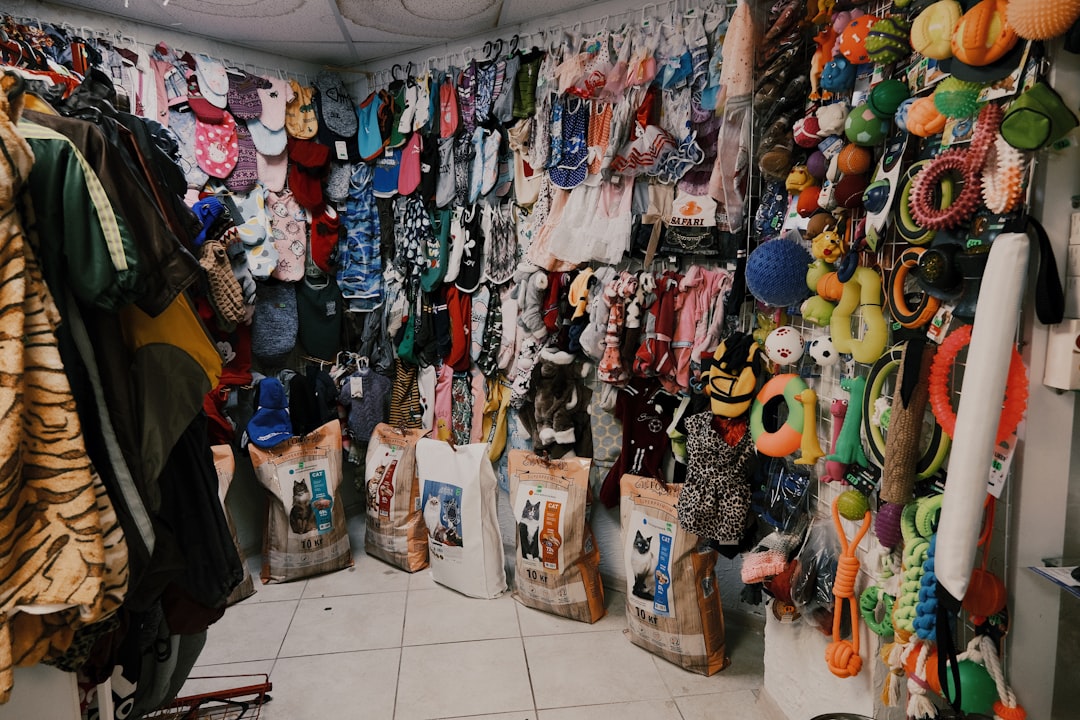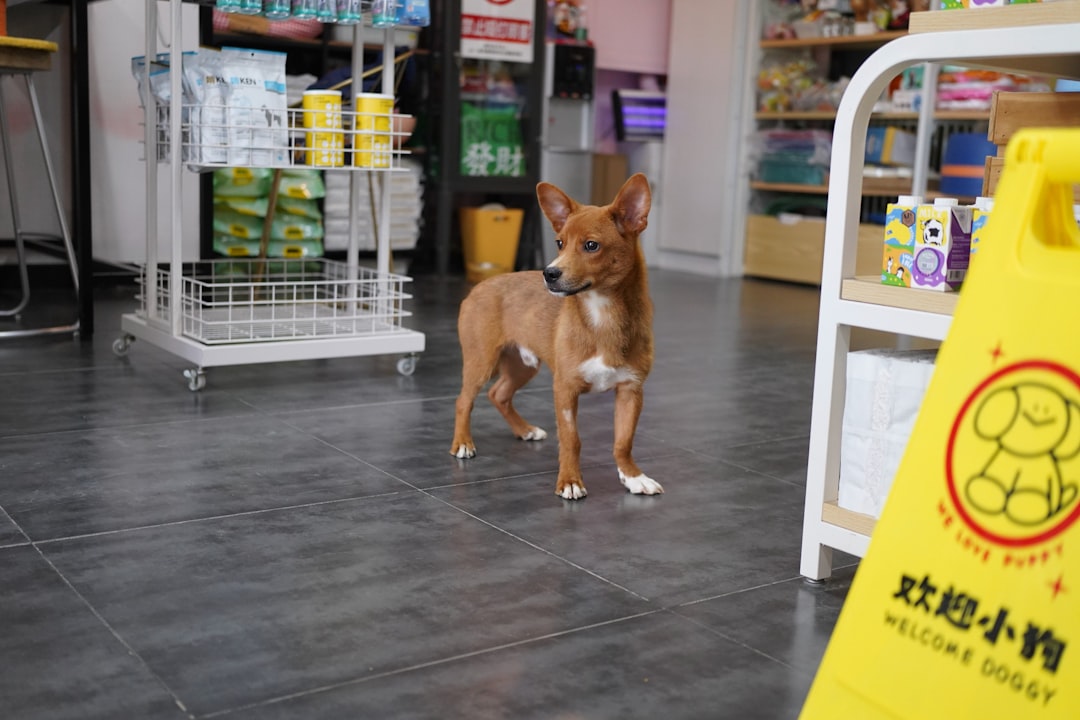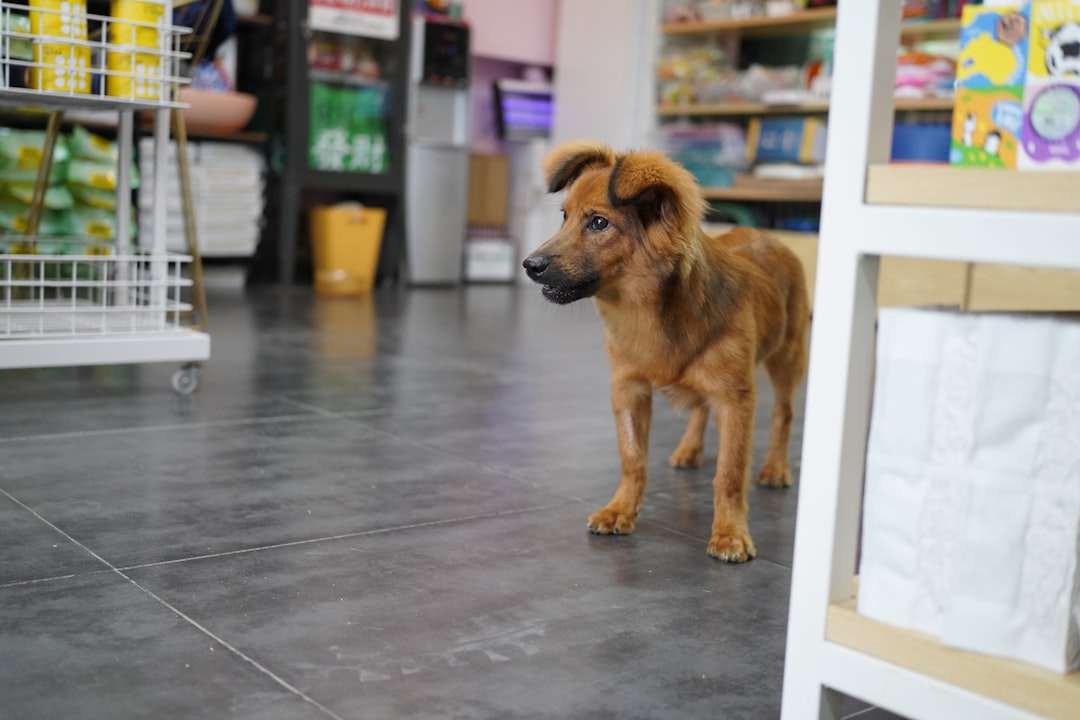

Engage prospects with a scan and streamline customer engagement with FREE QR code marketing tools by Sona – no strings attached!
Create a Free QR CodeFree consultation

No commitment

Engage prospects with a scan and streamline customer engagement with FREE QR code marketing tools by Sona – no strings attached!
Create a Free QR CodeFree consultation

No commitment
In today’s digitally driven world, QR codes have evolved from a novelty to a strategic powerhouse in bridging offline engagement with online action. For pet stores, QR codes represent a fun, frictionless, and surprisingly effective way to boost customer engagement, drive sales, and streamline operations without requiring an app download or complex setup.
Yet, for many pet retailers, a critical challenge persists: high-value prospects can slip through the cracks when there is no easy way to connect in-store and online behaviors. Whether a customer browses educational signage without leaving their details or interacts with print campaigns but never makes it to your CRM, missed opportunities accumulate quickly.
Imagine transforming every print flyer, checkout counter, product tag, and event booth into a gateway for instant information, exclusive promotions, or seamless purchasing enabled by one quick scan. This simple experience closes the gap between analog and digital, nurturing buying intent in the moments that matter most and capturing valuable data on engaged visitors even before a purchase or sign-up happens.

Pet stores often deal with inconsistent messaging between physical and digital channels, a challenge that can leave prospects confused, disengaged, or even lost before their intent is realized. QR codes bridge these gaps, turning every offline touchpoint into a measurable source of engagement that also drives operational efficiency. When implemented thoughtfully, QR workflows reduce friction in moments where customers want fast answers, personalized recommendations, or easy access to services.
The result is a better experience for shoppers and staff alike. Customers can self-serve by scanning a code that answers a question or triggers a booking, while your team gains the data needed to follow up and attribute value to each interaction. From shelf talkers to receipts, from adoption events to direct mail, QR codes give pet stores a repeatable way to move people from curiosity to conversion with fewer steps and clearer signals.
Tools like Sona QR make deployment and performance analysis straightforward. Dynamic codes can be updated without reprinting, scan data can be viewed in a single dashboard, and integrations push engagement signals to your CRM so marketing and operations can optimize touchpoints continuously.

Pet store operators frequently face the pain of invisible traffic: potential shoppers interact with print materials, appointment cards, or flyers but remain anonymous and unengaged in follow-up marketing. This lack of visibility allows valuable leads to slip by and slows down conversion cycles, opening the door for competitors to capture interest first. In veterinary retail, storefront QR strategies have proven effective. A customer may admire a training class poster or read a bag’s nutrition label, yet never take the next step because the path is not obvious or convenient.
QR codes solve these offline-to-online gaps by empowering instant digital engagement at every point of interaction. With a simple scan, customers can jump from physical discovery to a digital action without typing URLs or downloading an app. That immediacy reduces friction and expands the number of meaningful touchpoints you can measure, attribute, and improve.
For pet stores, QR code adoption not only enhances the shopper journey but also surfaces actionable signals such as category interest, service intent, and local event engagement. This makes it easier to nurture customers before they disappear and to assign real value to every marketing touchpoint.
Choosing the right QR code format reduces friction and aligns the scan with the outcome you want. Pet retail spans education, services, and commerce, which means you will likely benefit from multiple formats configured to specific moments along the journey. From prefilled forms for grooming to Wi-Fi access that supports in-store browsing, each format can be tuned to increase completion rates and data quality.
Dynamic QR codes are especially useful in retail. They allow you to edit destinations after printing, run A/B tests, and view detailed analytics by location or asset. With Sona QR, you can generate, manage, and track all of the following in one platform.
When deciding between static and dynamic codes, use static for fixed, evergreen destinations such as a store hours page. Choose dynamic when you want traceability, flexibility, and campaign optimization, which will be the case for most promotional or service-oriented placements.

Many retailers overlook offline growth opportunities because it is hard to track which real-world touchpoints drive interest or sales. QR codes turn that challenge into an advantage by giving you measurable actions wherever your audience encounters your brand. The key is to map scans to intent-rich moments, then design destinations that close the loop quickly and track campaign performance.
Think about the micro-journeys your customers take. A dog owner might scan a shelf tag to compare ingredients, a new adopter might scan a flyer to book a first check-in, and a busy parent might scan a receipt to reorder food. Each moment is a chance to capture intent and nurture it with timely content or offers.
This distributed approach turns every offline interaction into a lead generation touchpoint. It also reduces the risk of losing prospects who prefer browsing quietly, since the scan captures enough engagement for you to follow up with relevance and respect.

Real-world friction points, such as late lead capture and untracked customer intent, reduce the effectiveness of even the best retail strategies. QR codes address these moments directly by guiding customers toward the next step while giving your team visibility into what matters most. Below are three high-impact use cases tailored to common pet store interactions.
Each use case surfaces engagement data earlier and more accurately, giving marketing and operations teams a head start on nurturing relationships. In practice, stores that combine these use cases often see higher scan rates, more bookings, and better attribution across their mixed media footprint.
A persistent pain point for many pet stores is the inability to segment or retarget based on real shopper behavior, especially when details are not captured until purchase. Every QR scan represents a behavioral signal that can be used to segment audiences and personalize follow-up. With a structured approach, your scans become a source of high-quality first-party data that fuels more relevant outreach and higher conversion rates. For a tactical framework, see Sona’s Playbook titled Intent-Driven Retargeting.
Consider who is scanning and why. A new adopter scanning a puppy training flyer has different needs than a long-time customer scanning a high-protein kibble comparison. Capturing context such as location, time, and asset helps you tailor messages that feel helpful rather than intrusive.
For pet stores, useful audience distinctions include first-time pet parents versus experienced pet owners, service seekers for grooming or training versus product researchers, and single-pet households versus multi-pet households. Segmenting by these traits creates more personal journeys that respect the customer’s needs and timeline.
Disconnected campaigns lead to wasted budget and mixed messages that confuse customers. QR codes can unify your marketing by tying offline encounters to digital destinations where engagement can be measured and optimized. When every channel routes to purposeful landing pages and tracks scans with consistent parameters, you gain a clear view of performance across the entire journey.
Use QR codes as connectors between channels, not as standalone gimmicks. Pair each code with a compelling call to action and a destination tailored to the context. Then use Sona QR to centralize management and reporting so you can refine placements and creative as results come in.
QR codes serve as the offline onramp to your digital marketing engine and unlock a new layer of data collection across channels that used to be impossible to measure. With a centralized platform like Sona QR, you can manage all your codes, monitor performance, and sync scan data with your CRM and ad platforms so nothing falls through the cracks.
Getting from idea to impact is easier when you follow a clear process. Use the steps below to align your goals, choose the right formats, and launch with confidence. Each step includes pet store specific considerations and tips to ensure smooth execution.
Start by defining a single, high-value outcome that QR codes can influence directly. Common goals in pet retail include increasing grooming bookings, driving sign-ups for training classes, generating product reviews, and boosting repeat orders for consumables like food or litter. To accelerate review generation, route scanners to Google reviews.
Focus on a use case that already gets offline attention. If grooming interest is high but bookings lag after hours, place codes on grooming posters, at the checkout counter, and in direct mail to capture intent when staffing is light. For new adopter support, use codes on adoption packets and starter kits that route to care checklists and bundled offers.
Your choice of QR type should match the desired action and your need for flexibility. Dynamic QR codes are usually best for retail because they support tracking and future updates without reprinting. Use static codes only for permanent destinations like store hours or a general contact card.
If your goal is appointment booking, link to a mobile form that confirms time, pet details, and service preferences. For repeat orders, send scanners to a prefilled cart or subscription enrollment page. For educational content, use a short landing page with embedded videos and product recommendations.
Well-designed codes get more scans. Use your brand colors and a clear frame that signals the benefit, such as Scan for 15 percent off grooming or Scan for puppy care tips. Place a short, benefit-driven call to action close to the code so shoppers know what they will get for their effort.
Before deploying, test across common environments. Angle, distance, and lighting all affect scannability. Validate that different devices and camera apps recognize the code quickly, and confirm the landing page looks great on smaller phones.
Roll out your codes in placements that match your growth plan and audience behavior. In-store shelves, end caps, and checkout counters are powerful because they capture real-time intent. Packaging inserts and receipts extend engagement post-purchase. Direct mail and community flyers widen reach to local pet owners who may not visit the store regularly.
Coordinate creative so the same promo or message feels consistent across placements. Use unique codes per asset to isolate performance and enable granular optimization. Update destinations as you learn what works best.
The value of QR codes compounds with measurement. Use Sona QR to track scans by asset, time, and location, then analyze how many scans convert to bookings, sign-ups, or orders. Look for patterns, such as certain end caps outperforming others or weekends generating more grooming interest, and adjust your placements and messages accordingly. For methodology, read Sona’s blog post single vs multi-touch attribution models.
Run small experiments to improve results. Test different calls to action, incentive types, and landing page layouts. Share findings with staff so they can promote the codes that convert best and encourage customers at the right moments.
Automated QR solutions can streamline this entire process. With Sona QR, you can create codes, design branded frames, route scans to mobile optimized pages, and sync data to your CRM for timely follow-up.

For many retailers, the inability to link offline engagement to digital revenue creates a blind spot in ROI calculations. QR code tracking closes that gap by connecting physical touchpoints to measurable outcomes like bookings, orders, and repeat visits. The key is to capture enough context at the scan and then follow the journey through conversion. To connect these dots at scale, see Sona’s blog post The Essential Guide to Offline Attribution.
Start with a baseline. Measure how many scans each placement generates, then track what happens next. If a grooming poster gets many scans but few bookings, the landing page or CTA might need refinement. If shelf tags drive high engagement but low sales, consider adding a limited-time incentive or bundling recommendations.
With Sona QR and Sona.com, you can capture detailed scan data, sync it to your CRM, and resolve anonymous activity to known buyers through identity resolution and multi-touch attribution. These capabilities make QR codes part of a performance marketing system rather than a one-off tactic.
The most successful QR programs combine consistent execution with a few creative flourishes that fit the retail environment. Start by choosing metrics that matter, educating staff on how to present the value of scanning, and connecting scans to automated follow-ups so the journey continues after the first interaction.
As you scale, keep refining placement, messaging, and incentives. Seasonal campaigns, new product launches, and community events all provide fresh opportunities to test and learn. Treat each code as an instrumented touchpoint that can be tuned over time.
Creative deployment examples include QR codes on starter kit packaging for auto-reorders, codes on grooming bandanas that link to next-appointment discounts, and codes at a training class photo booth that route to a gallery and referral offer, as well as giveaways. With Sona QR’s integrations to HubSpot and Salesforce, each scan can trigger workflows, lead scoring, and custom audiences without manual effort.
QR codes are more than a shortcut, they are a scalable strategy for digital transformation in pet stores. By activating every flyer, tag, shelf, and receipt, pet retailers can turn idle interest into measurable action and reduce the loss of high-value prospects who would otherwise go untracked. The benefits extend beyond marketing into operations, as staff spend less time on manual tasks and more time on customer care.
Here is what a strategic QR program delivers for pet stores:
With the right tools and a unified strategy, QR codes become a durable growth lever. Sona QR helps you generate and manage dynamic codes, monitor performance in real time, and sync every scan to your CRM. Sona.com extends that foundation with identity resolution and multi-touch attribution so you can connect scans to revenue and prove the impact of your efforts. Start creating QR codes for free.
QR codes have transformed pet stores from simple retail spaces into interactive hubs of customer engagement and loyalty. Whether it’s attracting new pet owners, enhancing in-store experiences with instant access to product info and care tips, or driving repeat visits through personalized offers, QR codes turn every touchpoint into a meaningful connection. Imagine knowing exactly which promotions bring in the most customers and being able to update those campaigns instantly without reprinting signage.
With Sona QR, pet stores can create dynamic, trackable QR codes in seconds, monitor real-time scan data, and link every interaction directly to sales performance. This means no missed chances to engage pet lovers or boost revenue—just smarter marketing that grows your business and deepens customer relationships. Start for free with Sona QR today and transform every scan into a loyal customer and lasting success.
Pet stores can use QR codes to provide instant information, enable easy appointment booking, deliver personalized recommendations, and offer exclusive promotions, creating a seamless offline-to-online customer journey without requiring app downloads.
QR codes enhance engagement by bridging offline and online interactions, capture valuable first-party data, reduce manual processes, increase sales conversions, provide measurable marketing insights, and improve operational efficiency.
QR codes turn physical touchpoints like flyers, shelf tags, and receipts into measurable channels that drive bookings, sign-ups, and purchases while enabling tracking, audience segmentation, retargeting, and campaign optimization.
Innovative promotions include placing QR codes on product packaging, adoption packets, grooming posters, community flyers, window decals, and event booths to deliver dynamic content, facilitate bookings, trigger loyalty enrollment, and track customer intent.
Pet stores can increase sales by strategically placing QR codes that guide customers to product information, reorder pages, mobile checkout, loyalty programs, and appointment scheduling, while using scan data to personalize offers and optimize marketing efforts.
Use Sona QR's trackable codes to improve customer acquisition and engagement today.
Create Your FREE Trackable QR Code in SecondsJoin results-focused teams combining Sona Platform automation with advanced Google Ads strategies to scale lead generation

Connect your existing CRM

Free Account Enrichment

No setup fees
No commitment required

Free consultation

Get a custom Google Ads roadmap for your business






Launch campaigns that generate qualified leads in 30 days or less.
